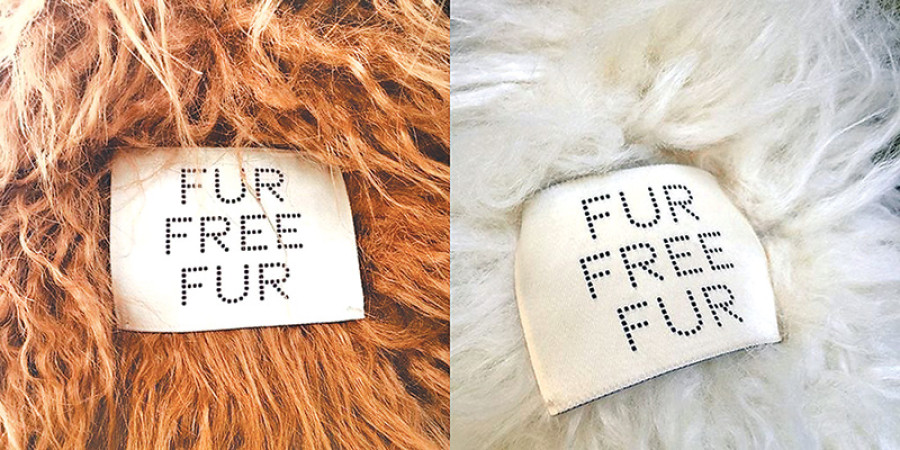Sun, Dec 14, 2025
Opinion
Faux fur isn’t as fake as you think
Last year, I went to the house of the head of a group of Jains in Nagpur in the Indian state of Maharashtra. Along the way I was told how religious his family was; how they all ate before sunset and consumed no root vegetables.
bookmark
Maneka Sanjay Gandhi
Published at : April 1, 2018
Updated at : April 1, 2018 08:23
Last year, I went to the house of the head of a group of Jains in Nagpur in the Indian state of Maharashtra. Along the way I was told how religious his family was; how they all ate before sunset and consumed no root vegetables. I entered their main living room. The huge rug I was stepping on was made of patches of horse-skin sewn together. My host kept insisting that it was fake until I showed him the leathery skin the hair was attached to.
Something similar has been exposed in England recently. People buy coats with fur linings and fur lined boots for their children; keyrings and hairclips with colourful bobbles, shoes with pompoms and soft toys. The buyers believe that since the items are cheap and colourful, the fur is acrylic.
Not true.
An investigation by Humane Society International (HSI) has found that a large number of items are not fake, or faux, fur but real fur.
Caught red-handed
HSI found many shops with no-fur policies selling fur items. Fluffy “faux fur” clips sold by Boots were made from mink; pompom key rings from Tesco and gloves from Fat Face were made of rabbit fur. Urban Outfitters was selling sweaters with real fur labelled as “faux.” Misguided was found to have cat fur lining their shoes. Real fur was being sold as the fake stuff at House Of Fraser, Lily Lulu, Amazon and ASOS. Neiman Marcus was called out for selling three pairs of boots touted as being made with fake fur, except it was real. When a buyer took home a “faux fur” pompom keyring from TK Maxx, she grew suspicious. The retailer reassuring her that the pom-pom had “been investigated by our internal trading standards department” and that they had “been assured that this item is in fact faux fur”. HSI revealed that the pom-pom had actually been made with rabbit fur. Investigators found that TK Maxx was selling jackets made of fox fur. Mink fur earrings, rabbit fur shoes with pompoms and keychains, fox fur hats, fox fur trims and chinchilla fur scarves, were all on sale, advertised as faux fur by Amazon, Boohoo, Miss Bardo, Not On The High Street and Etsy, and through Groupon. Last year, HSI filed an enforcement petition to the Federal Trade Commission; Neiman Marcus, Kohl’s and Nordstrom were among the 17 retailers named in the report for selling garments that were falsely advertised or labelled as faux fur. Forever 21 has also been the subject of an investigation by ‘Good Morning Britain’.
All these shops had advertised a strict No Fur policy.
Appalling conditions
Most consumers believe that since the products are so cheap, they cannot be fur. The truth is that the appalling conditions that animals suffer on fur farms mean real fur can be produced and sold more cheaply than faux fur.
The life of an animal is worth nothing when it is badly kept, hardly fed, forcibly made to reproduce and killed within a few months. Fur farms have millions of animals kept in small wire cages, and Poland, China, France, Finland follow no rules in the sheer viciousness and cruelty of their operations. As writer Tansy Hoskins said in The Guardian, “Fur farms involve 75 million animals kept in tiny cages, many of which become infected with disease, suffer horrific injuries and go mad from grief and stress.” It all ends with a brutal death: electrocution, gassing, or even skinning alive. PETA has released an exposé narrated by Paloma Faith containing footage taken on hundreds of supposedly “high welfare” fur farms in Europe, all showing animals who have been driven insane by the cruelty. We’ve seen foxes with skinless paws forced to live beside their decomposing cage-mates, and minks with untreated wounds, one so severe that his brain was visible. Countless animals had resorted to self-mutilation and cannibalism.
These are just some of the stomach-churning scenes that are documented time and time again. You can see these dreadful farms exposed by undercover operatives on the YouTube. In China, the world’s largest exporter of fur, you can see cats, rabbits and dogs being skinned alive.
The skins of coyotes, chinchilla, mink, foxes, rabbits, raccoons, dogs and cats are sold at dirt cheap rates. Consumers want faux furs to look like the real thing—but they don’t want real fur. So the retailers sell the hair of these dead bodies as fake! Often sold for under £10, it is snuck into accessories. Among the items HSI found for sale are £5 pom pom keychains made from rabbit fur; a parka with raccoon dog fur trim for £35; and a knitted hat with a marmot fur bobble for £3.50. Since there is no legal requirement to label animal fur in all products, this cheats consumers. People expect real fur to come in the form of full mink coats or fox fur scarves. What they don’t expect is that it will be dyed bright colours, fashioned into pompoms or trims, attached to accessories like hats, gloves and shoes, sold at very cheap price and, of course, mislabelled.
If retailers like Boots and Tesco can tell lies, selling real fur as faux fur, consumers have to become their own fur detectives.
Staying fur-free
Look at the tips: The tips, of the hairs in real fur, taper and have pointed ends, whereas the hairs on faux fur are blunt. Hairs on real fur will also be different lengths, while faux fur tends to be more uniform.
Look at the base: Part the hair to see how it is attached. Animal fur has a leathery backing because it’s attached to the animal’s skin, whereas faux fur will have a material woven backing. Real fur is often completely smooth at the base. Like human skin. Burn it: Perhaps not in the shop. Try it on something you already own. Trim a few hairs and set fire to them. Real animal fur singes and smells like human hair burning. Faux fur melts in a sticky way, cooling to form hard plastic balls, and will probably smell plastic-ky. If it smells like burnt paper, burns like paper and become a light, fluffy gray ash, this means the faux fur is cotton, linen or rayon based.
Don’t look at the price : Real fur is cheaper than fake. Smaller bits of fur and fur trims are cheap as they are the discards of dead animals, so don’t let the relatively low price of a garment fool you.
Do not buy anything with “fake fur” online: EU regulations state that “textile products” containing fur should be labelled as containing “non-textile parts of animal origin”. However, online products are exempt from that requirement—as are footwear and accessories. And although it is illegal to mislead consumers, retailers are very rarely prosecuted.
Feel the fur. Fur feels very soft to the touch, falls in a smooth and sleek line, and passes through your fingers as if you’re petting a cat. Faux fur feels coarse and rough to touch, can be sticky to touch in humid weather, and might have the same feel as a stuffed toy animal.
Stick a pin into the item (through the fur and its lining). If it goes through easily, this suggests it is faux fur because the pin is sliding through a synthetic base. If it is hard to push through, or resists completely, it is likely to be real fur, as you’re trying to push through the leather lining to which the fur remains attached.
Why are you buying fake fur? There is nothing elegant or humane about stealing the skin of another being—or even pretending to do so. Buying something that has real fur in it, even if it’s “mostly” faux, means one more animal was skinned alive, or anally electrocuted, for the sake of “fashion.”
To join the animal welfare movement contact [email protected], www.peopleforanimalsindia.org
Editor's Picks
Public savings at risk as debt-ridden Nepal Airlines’ finances spiral
Hypertension and diabetes driving eye crisis in Kathmandu Valley
Bureaucratic hurdles, legal failures force father and daughter to take their own lives
Record graft case filed over China-funded Pokhara airport
Drone helps farmers tackle old challenges
E-PAPER | December 14, 2025
×




 7.12°C Kathmandu
7.12°C Kathmandu










